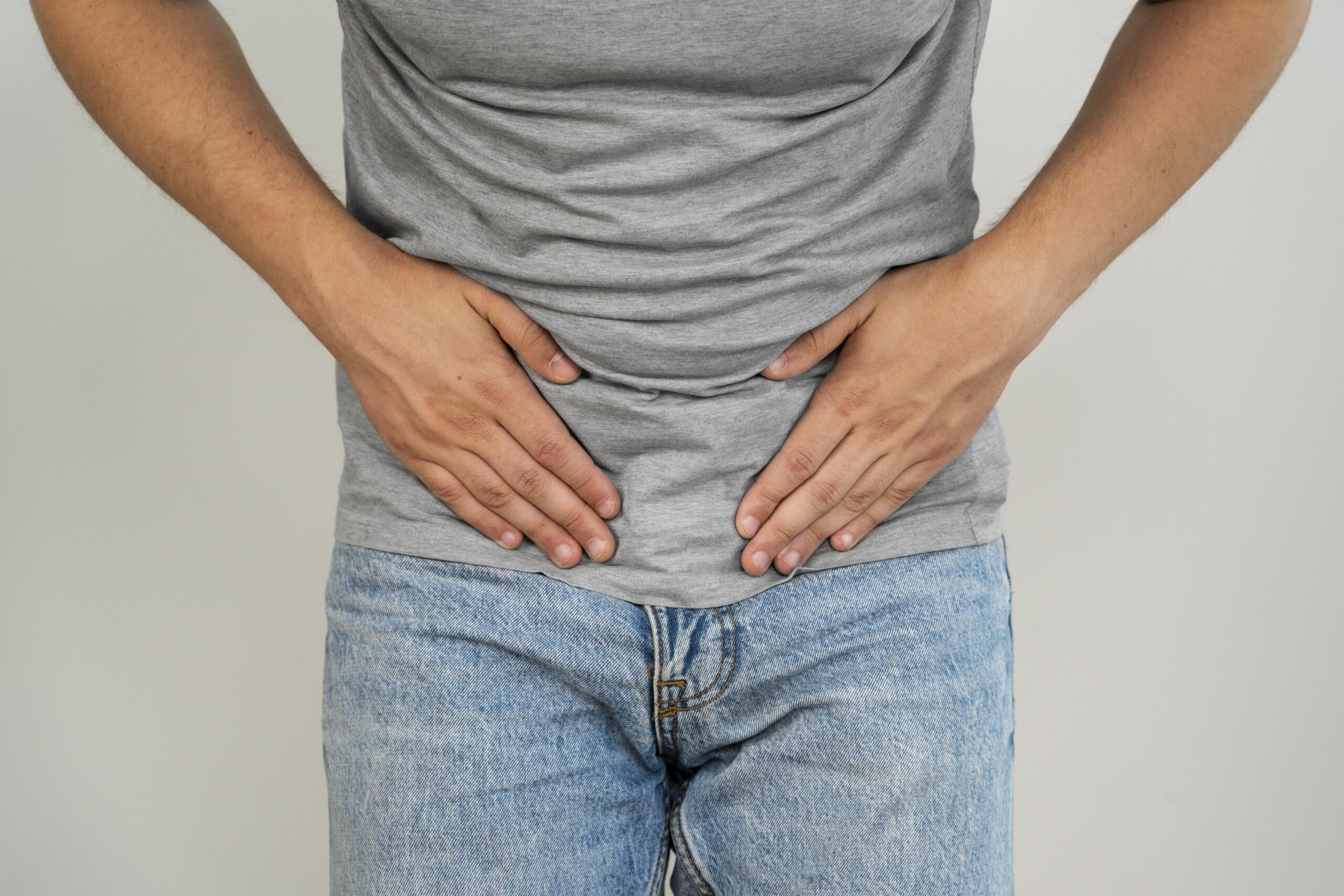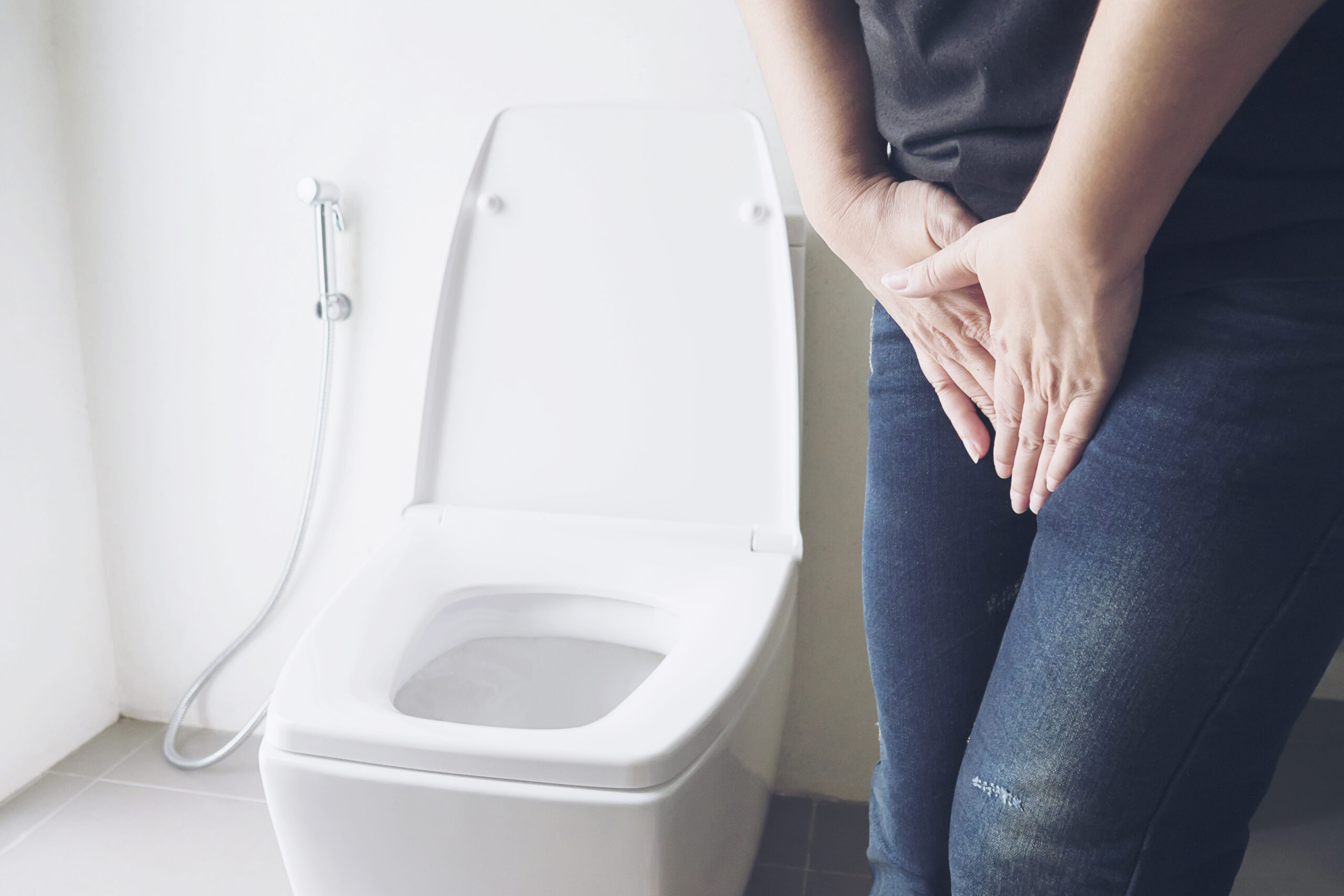Bladder infection, an inflammation caused by bacteria and microorganisms, is a medical condition characterized by an increased need to urinate due to constant fluid intake. To alleviate its symptoms, patients often consume large quantities of various warming drinks, and some may also resort to herbs with a diuretic effect.
It is important to note that drinking large amounts of fluids during bladder infection does not exacerbate the condition but helps hydrate the body and relieve discomfort. However, medical attention is necessary for urinary tract or kidney problems.
Bladder infection typically occurs through the urethra, and women are more susceptible to it due to the proximity of the urethral opening to the anus and vagina. Women may experience bladder infection multiple times throughout their lives. A healthy individual's urinary tract remains sterile and free from germs and microorganisms.

Urinary tract infections![]() (UTIs) are commonly caused by Escherichia coli
(UTIs) are commonly caused by Escherichia coli![]() , a bacterium that naturally resides in the body and is found in fecal matter. While it usually does not pose a threat within the digestive tract, when it adheres to the bladder walls via the urethra, it causes cystitis. Failure to initiate prompt medical treatment could result in the bacteria ascending to the kidneys.
, a bacterium that naturally resides in the body and is found in fecal matter. While it usually does not pose a threat within the digestive tract, when it adheres to the bladder walls via the urethra, it causes cystitis. Failure to initiate prompt medical treatment could result in the bacteria ascending to the kidneys.
The entry of E. coli into the urinary system could occur through various means, including contaminated towel use or improper hygiene practices. In addition, sitting on cold, damp surfaces or wearing wet swimsuits may also lead to cystitis. Sexual intercourse without the use of a condom is another cause, with bacteria more easily entering the urethra during intercourse. Further, the urethral mucosa may sustain abrasions during intercourse, thereby promoting bacterial growth. Overheating and sweating in intimate areas also facilitate bacterial development.
Apart from E. coli, the scented bath products used may cause inflammation. Some women may experience bladder infection![]() from vaginal contraceptives and tampons.
from vaginal contraceptives and tampons.
Urinary tract infections specifically affect women![]() . It is related to differences in anatomical structure. Women have a shorter urethra and no antibacterial factors in the urinary tract, which are produced by the prostate gland in men. Additionally, micro-injuries of the urethra – which may occur during sexual intercourse, as well as some methods of contraception – favor the development of infections.
. It is related to differences in anatomical structure. Women have a shorter urethra and no antibacterial factors in the urinary tract, which are produced by the prostate gland in men. Additionally, micro-injuries of the urethra – which may occur during sexual intercourse, as well as some methods of contraception – favor the development of infections.
In men![]() , however, this disease is predisposed to disorders in the outflow of urine caused by an obstruction below the bladder. Most often, the urethra is pressed by the diseased prostate.
, however, this disease is predisposed to disorders in the outflow of urine caused by an obstruction below the bladder. Most often, the urethra is pressed by the diseased prostate.
The clinical manifestation of the disease under consideration shares similarities with other types of urinary tract infections. The principal symptoms![]() characterizing this disease are challenging urination (dysuria), usually accompanied by pain and a burning sensation. Additionally, patients often experience frequent urges to urinate, and only a small volume of urine is passed. In some instances, patients may experience nocturia, which is defined as urinating more than once during the night. This symptom is considered significant when the need to urinate at night occurs more frequently than once, disrupts sleep, or causes other symptoms.
characterizing this disease are challenging urination (dysuria), usually accompanied by pain and a burning sensation. Additionally, patients often experience frequent urges to urinate, and only a small volume of urine is passed. In some instances, patients may experience nocturia, which is defined as urinating more than once during the night. This symptom is considered significant when the need to urinate at night occurs more frequently than once, disrupts sleep, or causes other symptoms.
Another manifestation of this disease is pain above the pubic symphysis, which is the anatomical location of the urinary bladder. Patients typically do not experience pain in the kidney area, the lumbar part of the spine, or the lower back. Patients with this disease may also present with haematuria (blood in urine) and other general symptoms such as fever, chills, nausea, and vomiting.

Bladder infection in children![]() presents with different symptoms compared to adults. This bacterial infection is one of the most prevalent among the pediatric population. Diagnosis in children can often be challenging, particularly in the youngest age groups.
presents with different symptoms compared to adults. This bacterial infection is one of the most prevalent among the pediatric population. Diagnosis in children can often be challenging, particularly in the youngest age groups.
E. coli is the primary cause of bladder infection in children. Contributing factors to the infection may include urinary tract abnormalities or infections in other family members. Neglect of personal hygiene may also lead to the disease.
Symptoms of bladder infection in children include painful urination and a burning sensation. Hematuria and purulent discharge from the urethra may occur in children and adults. Other symptoms of bladder infection in children include abdominal pain and experiencing pain during urination with small amounts of urine.
It is one of the most common ailments among pregnant women![]() . In most cases, the cause is bacterial infection. The symptoms can be troublesome, although many future mothers suffer from bladder infections without any symptoms. A urinary tract infection is indicated by pain in the lower abdomen and frequent urination of small amounts of urine. There may be blood or thick discharge in a pregnant woman's urine.
. In most cases, the cause is bacterial infection. The symptoms can be troublesome, although many future mothers suffer from bladder infections without any symptoms. A urinary tract infection is indicated by pain in the lower abdomen and frequent urination of small amounts of urine. There may be blood or thick discharge in a pregnant woman's urine.
Bladder infection during pregnancy results from a pregnant woman's greater susceptibility to infections. Some women believe that this is even the first sign of pregnancy. In this case, the disease should be treated under the doctor's supervision during the pregnancy. Sometimes, they may order an ultrasound examination of the abdominal cavity.
Pregnant women suffering from bladder infection are most often treated with oral antibiotics. However, not all medicines can be used, as some may harm the baby. As in the case of non-pregnant women, treatment lasts approximately seven days.
Home remedies for treating bladder infection during pregnancy include drinking, for example, cranberry, blackcurrant, or chokeberry juice. It is also advisable to drink plenty of water without sugar.
Cystitis, one of the most common urinary tract infections, is typically treated by family doctors. Upon exhibiting the previously mentioned symptoms, during diagnosis![]() specialists recommend a general urine test. Leukocyturia, an abnormal number of leukocytes in the urine, and bacteriuria, the presence of bacteria in the urine, are commonly detected by this test to identify an infection in the urinary tract. The standard urine sample must contain a minimum of 105/ml bacteria to establish significant bacteriuria. Diagnosis is usually concluded at this stage, and treatment is initiated.
specialists recommend a general urine test. Leukocyturia, an abnormal number of leukocytes in the urine, and bacteriuria, the presence of bacteria in the urine, are commonly detected by this test to identify an infection in the urinary tract. The standard urine sample must contain a minimum of 105/ml bacteria to establish significant bacteriuria. Diagnosis is usually concluded at this stage, and treatment is initiated.
Additional tests are advised if treatment fails to improve the symptoms or if they recur within 1-4 weeks. Urine culture![]() is a test that involves cultivating microorganisms from urine on specialized media. Urine is collected into sterile containers and sent to the laboratory, where the specific pathogen responsible for the infection is identified, and the specialists choose a drug that is most effective against the precise microorganism.
is a test that involves cultivating microorganisms from urine on specialized media. Urine is collected into sterile containers and sent to the laboratory, where the specific pathogen responsible for the infection is identified, and the specialists choose a drug that is most effective against the precise microorganism.
Imaging tests![]() , such as ultrasound (ultrasonography) of the abdominal cavity, voiding cystography, computed tomography, or magnetic resonance imaging, are also conducted less frequently. These tests aim to visualize the individual elements of the urinary system and search for the underlying causes of treatment failures.
, such as ultrasound (ultrasonography) of the abdominal cavity, voiding cystography, computed tomography, or magnetic resonance imaging, are also conducted less frequently. These tests aim to visualize the individual elements of the urinary system and search for the underlying causes of treatment failures.
Treatment of bladder infection with antibiotics![]() lasts from 7 to 10 days. Although the patient will feel relief just a few hours after taking the first dose, it is not advisable to stop the treatment. Otherwise, the bacteria will become resistant to the antibiotic. The consequence will be a recurrence of the disease with a vengeance. Even after the symptoms disappear, it will be advisable to repeat urine tests several days after starting treatment.
lasts from 7 to 10 days. Although the patient will feel relief just a few hours after taking the first dose, it is not advisable to stop the treatment. Otherwise, the bacteria will become resistant to the antibiotic. The consequence will be a recurrence of the disease with a vengeance. Even after the symptoms disappear, it will be advisable to repeat urine tests several days after starting treatment.
Medicines for bladder infection are also available over the counter. However, they should not be taken by people with extensive urinary tract infections, as other preparations may be more helpful in their case. Medicines for bladder infection include non-steroidal anti-inflammatory drugs![]() . In addition, herbs
. In addition, herbs![]() such as chamomile and birch extract may also be beneficial and can aid urination.
such as chamomile and birch extract may also be beneficial and can aid urination.
Some specialists recommend cranberry extract![]() as a cure for bladder infections. It is most often used to treat children. The extract is available without a prescription. Thanks to this, bacteria do not stick to the walls of the urinary bladder, and the excretion of microorganisms from the urinary tract takes place. The vitamin C in cranberries acidifies the urine, which also limits the reproduction of bacteria. However, even before using cranberry extract, you should consult your doctor or pharmacist.
as a cure for bladder infections. It is most often used to treat children. The extract is available without a prescription. Thanks to this, bacteria do not stick to the walls of the urinary bladder, and the excretion of microorganisms from the urinary tract takes place. The vitamin C in cranberries acidifies the urine, which also limits the reproduction of bacteria. However, even before using cranberry extract, you should consult your doctor or pharmacist.

In virtually all cases, a urinary tract infection is completely cured with the correct antibiotic (or antibiotics) for a long enough period. In rare cases of urinary tract infection, the microorganisms cannot be removed entirely, and the cause is always a severe urinary tract disease. Despite effective treatment, in some women, urinary tract infection recurs![]() with varying frequency (even several times a year).
with varying frequency (even several times a year).
A complete permanent cure for urinary tract infections is not possible in people with a catheter in the bladder because everyone develops an infection within a month of inserting the catheter or after completing antibiotic treatment, even if there are no symptoms.
In the case of a simple bladder infection, there is no need to perform any tests after treatment. In other cases of urinary tract infection, after antibiotic treatment, it is recommended to perform a follow-up urine culture (after 7-14 days). Control urine cultures should be performed periodically in every pregnant woman with a urinary tract infection, even if there are no symptoms and only a positive urine culture. If a urinary tract disease happens due to an infection, specialists recommend to treat it appropriately.
In addition to medications, many, often simple home methods![]() can significantly alleviate the symptoms of the disease, shorten the treatment time, and prevent further relapses. Those include:
can significantly alleviate the symptoms of the disease, shorten the treatment time, and prevent further relapses. Those include:
However, always consult your doctor before starting home treatment.
Ways to prevent![]() the development of bladder infection (especially in the case of recurrent forms) include:
the development of bladder infection (especially in the case of recurrent forms) include:
A bladder infection, medically known as cystitis, may lead to complications![]() , particularly when it is inadequately treated or when other risk factors are present. Some potential complications of a bladder infection include spreading to other areas of the urinary system, such as the kidneys, which can result in more severe conditions such as nephritis (pyelonephritis). In some cases, patients may experience frequent recurrences of bladder infections, which could be caused by various factors such as decreased immunity, unusual anatomy of the urinary tract, or sexual activity.
, particularly when it is inadequately treated or when other risk factors are present. Some potential complications of a bladder infection include spreading to other areas of the urinary system, such as the kidneys, which can result in more severe conditions such as nephritis (pyelonephritis). In some cases, patients may experience frequent recurrences of bladder infections, which could be caused by various factors such as decreased immunity, unusual anatomy of the urinary tract, or sexual activity.
Bladder infections in pregnant women may increase the risk of premature birth and low birth weight in the baby. Peritonitis, a severe complication that can occur when bacteria from a bladder infection enter the peritoneum, leading to inflammation of the peritoneum, is also possible. In the most advanced cases, sepsis, a potentially life-threatening condition, can occur when bacteria enter the bloodstream and spread throughout the body. Finally, untreated bladder infections may lead to long-term urinary tract disorders such as chronic cystitis.
Given the severe nature of these complications, it is crucial to diagnose and treat bladder infections appropriately to prevent adverse outcomes. Therefore, individuals who experience symptoms of a bladder infection, such as pain while urinating, frequent urination, a feeling of urgency, abdominal pain, or fever, are advised to seek medical attention promptly. Timely diagnosis and medical intervention can help prevent the complications that may arise from a bladder infection.